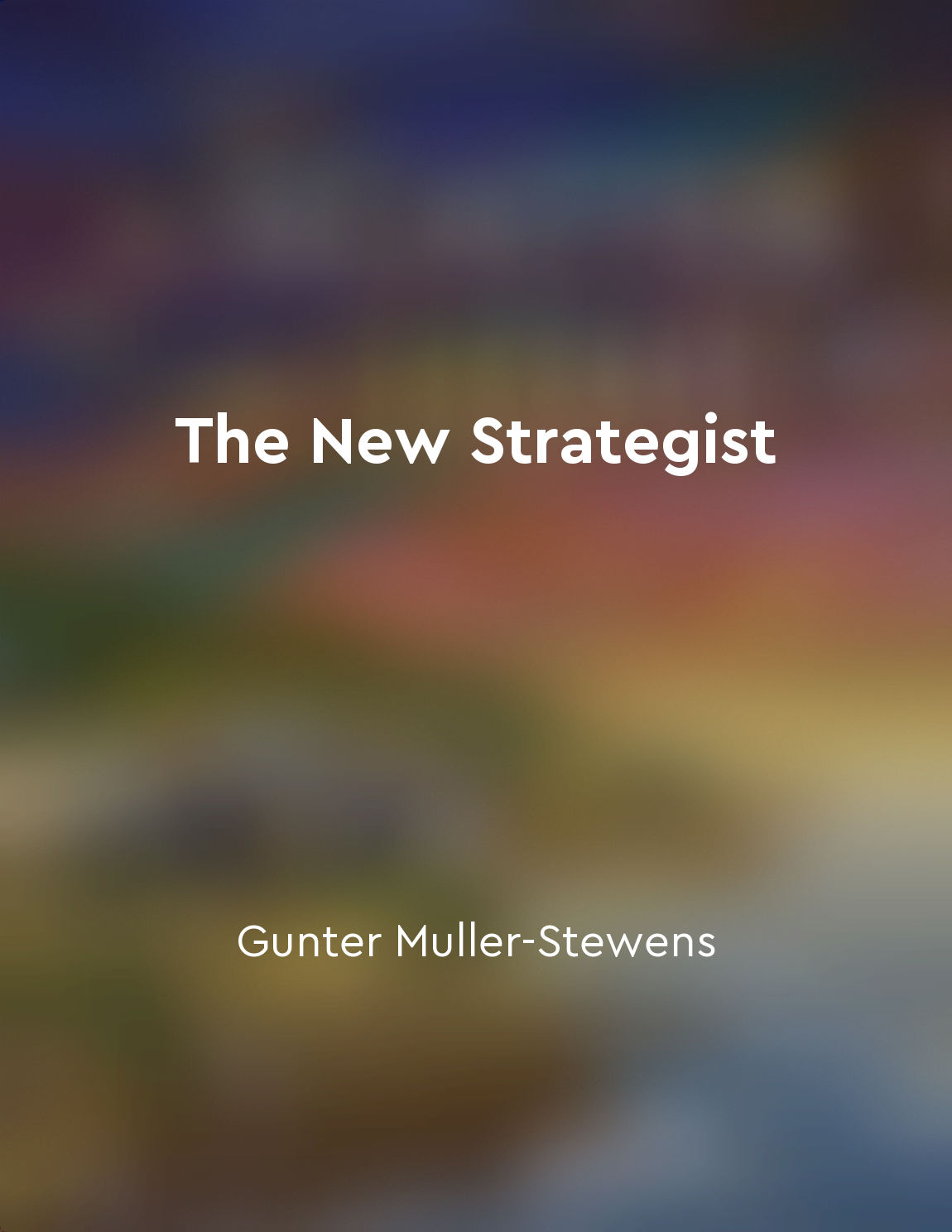Strategic agility enables organizations to adapt quickly to changing conditions from "summary" of The New Strategist by Gunter Muller-Stewens
Strategic agility is a vital capability for organizations in today's fast-paced and constantly evolving business environment. It refers to an organization's ability to swiftly respond and adapt to changing conditions, enabling it to stay competitive and successful in the long run. Essentially, strategic agility allows organizations to be proactive rather than reactive, anticipating and addressing challenges before they escalate into crises. One key aspect of strategic agility is the ability to sense changes in the external environment and internal dynamics of the organization. By being attuned to shifts in market trends, customer preferences, technological advancements, and competitive landscapes, organizations can make informed decisions and quickly pivot their strategies to capitalize on emerging opportunities or mitigate potential risks. Moreover, strategic agility involves being flexible and adaptive in the face of uncertainty and ambiguity. This means being willing to experiment, learn from failures, and adjust course as needed. Organizations that are rigid and resistant to change are likely to be left behind in today's dynamic business landscape. Another important element of strategic agility is the ability to mobilize resources and capabilities swiftly in response to changing conditions. This requires effective communication, collaboration, and coordination across different functions and levels of the organization. Decisions must be made quickly and implemented efficiently to ensure that the organization can adapt in a timely manner.- Strategic agility is a mindset that values innovation, agility, and resilience. It is about being proactive, flexible, and responsive to change, rather than being reactive and rigid. Organizations that prioritize strategic agility are better equipped to navigate uncertainty and complexity, seize new opportunities, and stay ahead of the competition.


